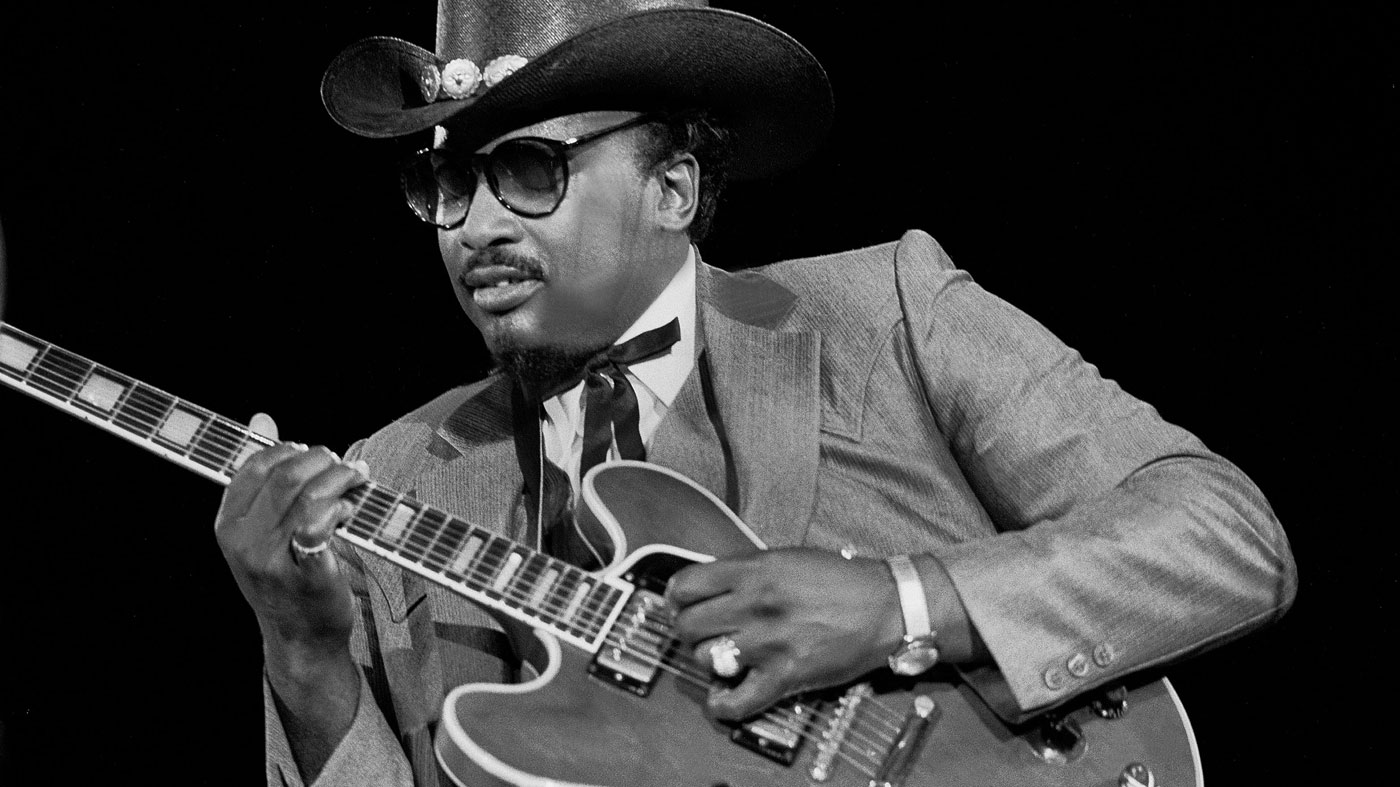Learn 5 killer Otis Rush-style blues guitar licks
Slick solo tricks that influenced Eric Clapton and Peter Green

Otis Rush came to prominence playing on the West Side Chicago blues scene in the late 1950s. A left-handed player, in the early days he would be seen playing right-handed guitars flipped over - and this is key to his distinctive phrasing.
A left-handed player, in the early days he would play right-handed guitars flipped over - and this is key to his distinctive phrasing
Played this way, the treble strings are ‘on top’, meaning string bends on these high notes must be ‘pulled’ rather than ‘pushed’, and every chord, scale and lick has a different feel all together.
Even when playing real left-handed guitars he prefers ‘upside down’ stringing, but, thankfully, there’s no need to go to such extremes to get an authentic Otis vibe - just be aware of his method and you can get started with this month’s lesson.
The first three examples are inspired by Otis’ late 50s/early 60s-style when he would often play Fender Stratocasters. On the last two examples we lean towards his later work, when he turned more to humbucker-equipped guitars like the Gibson ES-355 and similar thin-bodied semi-acoustics.
The point here is, Otis’ ‘voice’ on the guitar remained distinct, regardless of how much drive he was using. His playing is surprisingly nimble at times, given his unusual technique, so be prepared to put some time in as you try out this month’s examples!
Smooth arpeggios
Add a generous amount of spring reverb to give this sparse phrase some atmosphere. It’s all in the touch, adding a hint of wobble with the fretting-hand fingers, or the vibrato arm if you have one. Keep the drive low, particularly if you’re using humbucker pickups, and try to get the most value from each and every note!
Rushing around
Starting with this expressive bend (remember Otis would pull the treble strings down for these) we are reminded that he has quite a turn of speed when the mood takes him. This kind of phrase flows logically both upside down and the ‘right’ way up, so it gives an insight into how he would create his lead phrases.
Want all the hottest music and gear news, reviews, deals, features and more, direct to your inbox? Sign up here.
Minor pentatonic line
Pay particular attention to the fine details in this example, like the quarter-tone bends, pushing and pulling the timing against the rhythm of the backing music and the cheeky slide in bar 4. This is the type of phrasing that Eric Clapton picked up on back in the early 60s.
High-gain lick
Using a more distorted tone, this example is based on Otis’ later work, though still features many of the same stylistic quirks. After some soulful bends, be mindful of the ‘loose’ timing in bar 2. Though it is faithfully transcribed, it’s probably better to go by feel and see how far you can push and pull your timing.
High-register lick
Heading for the higher register, this example demonstrates how Otis would occasionally venture into what many might call rock lead playing, forming a link between Chicago blues and the ‘British Invasion’ bands of the 60s. The timing is a little quirky, but if the feel is right, don’t let playing ‘by the book’ be too much of a concern.
Backing track 1
Backing track 2
Total Guitar is Europe's best-selling guitar magazine.
Every month we feature interviews with the biggest names and hottest new acts in guitar land, plus Guest Lessons from the stars.
Finally, our Rocked & Rated section is the place to go for reviews, round-ups and help setting up your guitars and gear.
Subscribe: http://bit.ly/totalguitar





